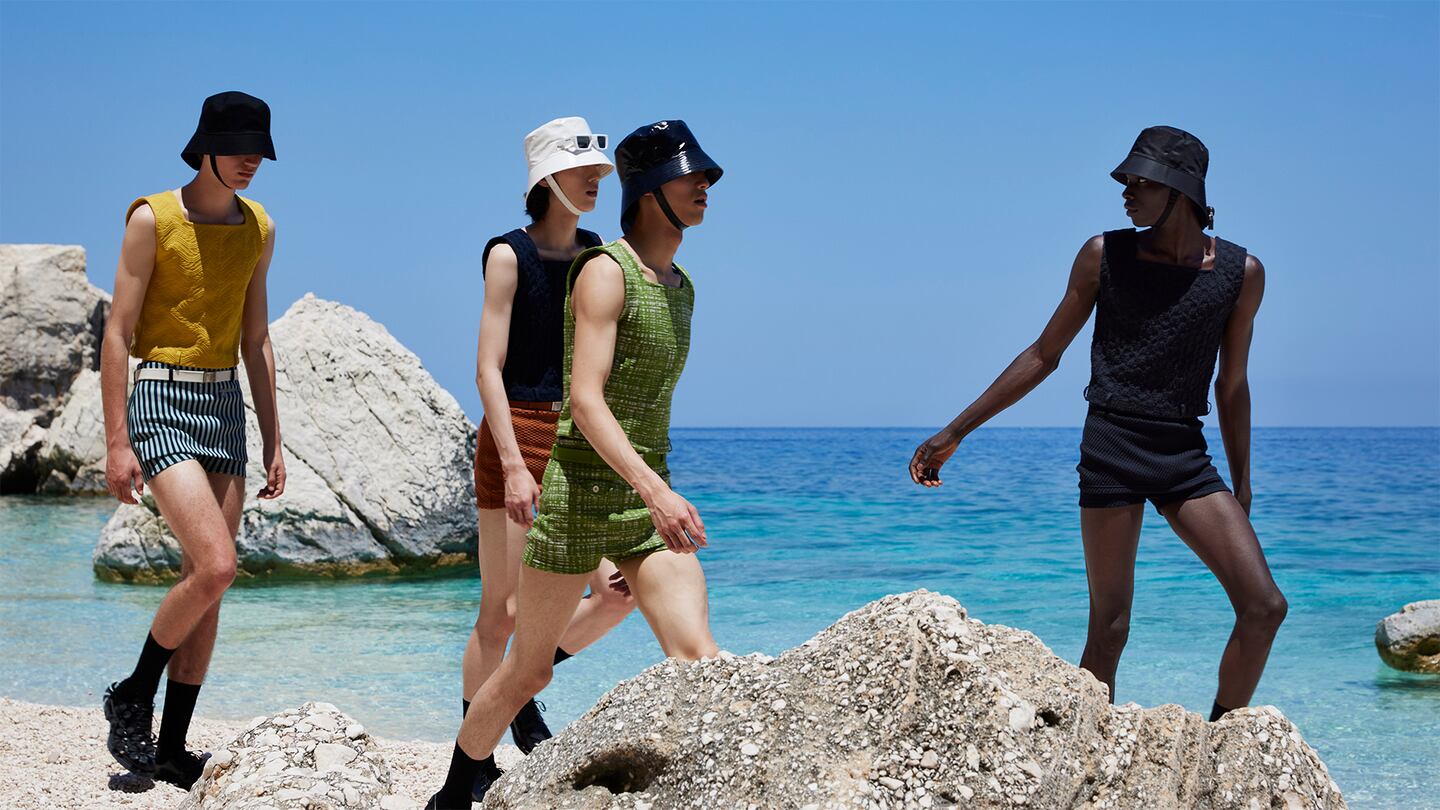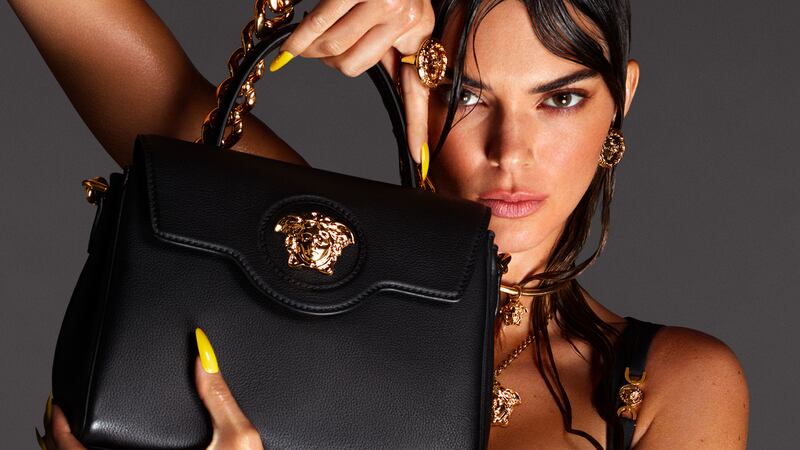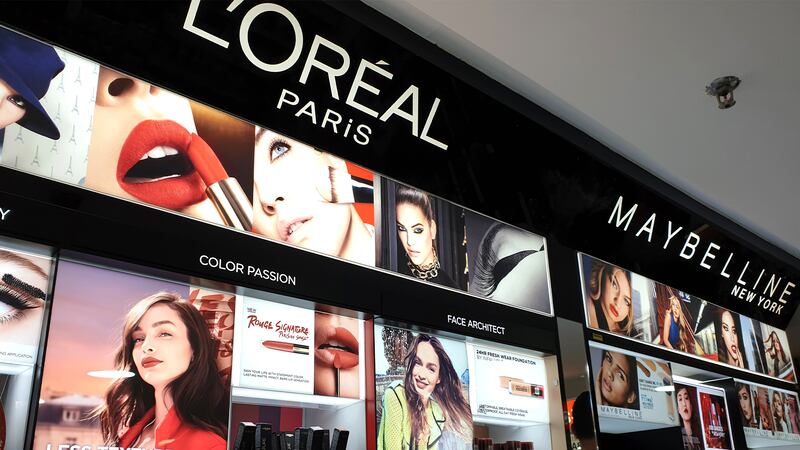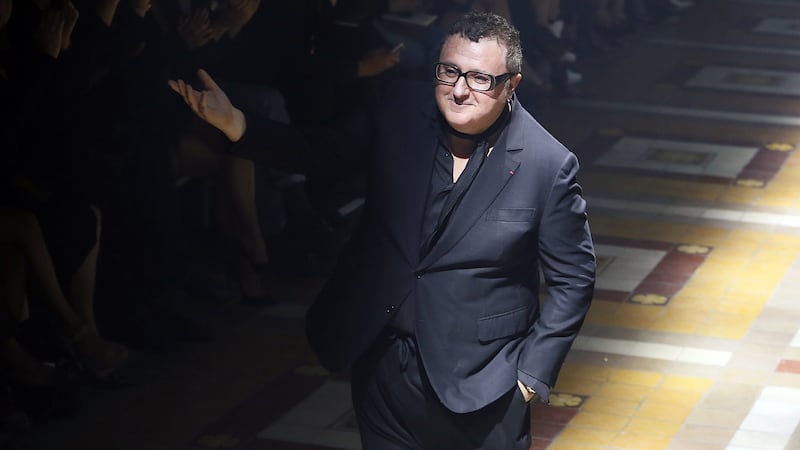
The Business of Fashion
Agenda-setting intelligence, analysis and advice for the global fashion community.

Agenda-setting intelligence, analysis and advice for the global fashion community.

A year ago, European luxury brands were reeling from the worst quarter in the sector’s recent history. Surging e-commerce sales and a rapid rebound from the coronavirus in the critical China market weren’t nearly enough to plug the gap from long-lasting store closures and stay-at-home orders aimed at slowing the virus in Europe and the United States. Sales fell by as much as 60 percent for some brands.
This spring has seen the sector bounce back far faster than expected, with the biggest groups like LVMH, Kering, Richemont and Hermès all beating estimates for their sales in the spring quarter. Even as periodic store closures continued, and with long-haul tourism — one of luxury sales’ biggest drivers — still far from a recovery, several groups have already seen sales surge well above pre-pandemic levels.
Economic stimulus payments and fewer alternatives than usual for consumers to spend their discretionary income have certainly given sales a boost. Still, the gradual return of restaurants, parties and travel seems to be pushing consumer appetite for items from the biggest luxury brands up, not down, despite increased competition for their paychecks.
Luxury’s biggest player, LVMH, saw its fashion division rebound sharply in the second quarter, with sales of the unit dominated by Louis Vuitton and Dior growing by 120 percent year-on-year — and 40 percent above 2019′s pre-pandemic levels. Cartier-owner Richemont, Gucci-owner Kering and Hermès also reported rapid growth.
ADVERTISEMENT
Other independent luxury brands, like Burberry and Ferragamo, by contrast, grew rapidly back from 2020′s crisis levels but were still flat or falling behind compared to 2019.
Prada Group reported a strong rebound in retail sales at its main line, but overall sales fell, too, as the company moved to slash wholesale accounts, and as its smaller Miu Miu and Church’s brands continued to struggle.
“The divergence between winners and losers has become more dramatic, with brands who were leading growth before the pandemic taking a bigger lead,” Thomas Chauvet, luxury analyst at Citigroup, said.
While the diverging growth rates among luxury brands could normalise in the years to come, some of the changes to the sector’s landscape will be long-lasting.
“There have been very significant transfers of market share over the past two years. That leaves the big groups with the capacity to reinvest in maintaining their competitive advantage,” Chauvet said.
Expect to see cash-flush luxury groups splash out on bigger and more spectacular marketing initiatives, extraordinary retail spaces, and bigger, better-trained and better-paid workforces. Smaller players might struggle to keep up.
Who were the fastest growers in luxury’s latest round of results?
1) Hermès: Quarterly sales up 33 percent over 2019
ADVERTISEMENT
Demand that far exceeds supply for its top-end Kelly and Birkin bags has driven Hermès’ reputation as luxury’s most resilient player for years. But the French brand still managed to surprise investors with the strength of its numbers this spring: Hermès reported sales that grew 33 percent above pre-pandemic levels during the second quarter, while its already-unmatched profitability surged to new heights. Recurring operating margins for the first half were 40 percent, compared to a 35 percent margin in 2019.
2) Richemont: Quarterly sales up 22 percent over 2019
The Swiss group controlled by South African Johann Rupert and specialising in hard luxury has struggled in recent years to keep up with LVMH and Kering as the luxury watch sector cooled and as its mid-sized and small fashion labels like Chloé, Dunhill and Alaïa fell behind competitors. But booming sales in luxury jewellery are helping drive a renaissance for the conglomerate: it owns Cartier, the category’s biggest and most famous brand, whose iconic lines like Juste un Clou and Love bracelets have been flying off shelves along with the house’s Panthere and Tank watches. Richemont’s spring quarter jewellery sales grew 142 percent year-on-year, and were up 43 percent versus 2019. Its “Other” brands division selling fashion and stationary continued to lag with sales 7 percent behind 2019 levels.
3) LVMH: Quarterly sales up 14 percent over 2019
It’s hardly a surprise when luxury’s biggest brand, Louis Vuitton, leads the sector. But surging sales at that house, as well as rapid growth at sister brand Dior helped LVMH’s key fashion division surge ahead of rivals even faster than analysts expected. Fashion and leather goods sales were 40 percent above 2019 levels.
Overall growth was slower for the company, whose Belmond hotel group and DFS airport retail chain are both taking a heavy hit from the collapse in international tourism since the pandemic.
First-half operating profit rose 44 percent over 2019 levels to €7.63 billion ($9.1 billion), and LVMH says these levels could stick thanks to the fashion brands’ bigger scale and as struggling divisions start to recover. “The notion that LVMH is seeing these higher margins as sustainable is the most important news of this intense reporting week,” said Bernstein analyst Luca Solca.
4) Kering: Quarterly sales up 11 percent over 2019
ADVERTISEMENT
Kering’s rebound has been partly held back in recent quarters due to its higher exposure to travel retail and wholesale, and potentially some consumer fatigue with flagship Gucci brand following four years of booming sales.
The spring quarter saw Gucci’s retail sales get to double-digit growth above 2019 levels. Kering’s smaller Saint Laurent and Bottega Veneta brands accelerated, too. First-half profits bounced back sharply to €2.2 billion, down 1 percent from 2019.
The best could be yet to come for Gucci’s rebound in the second half of the year, analyst Luca Solca said, with help from social media buzz surrounding the film House of Gucci starring Lady Gaga and Adam Driver, which is set to hit theatres in November.
5) Prada: Quarterly retail sales up 13 percent over 2019
Prada has been trying to reinvigorate growth for years. Its hit ready-to-wear collections and nylon bags kept the brand firmly planted in the fashion consciousness but struggled to make up for the declining popularity of its flagship Galleria bag, which had helped drive its rise to become a multi-billion dollar brand in the early and mid-2000s. As sportier, more youthful merchandising and big investments in digital marketing took hold starting in 2018, Prada phased out end of season sales and started slashing its exposure to wholesale.
The work to build a more tightly controlled, full-price Prada business seems to be paying off on the other side of the pandemic, while rolling out Raf Simons’ first collections as co-creative director — including the slick Cleo bags — is giving the brand an additional push. Retail sales grew 13 percent over 2019 in the second quarter, and first-half operating profit of €166 million was 11 percent higher than in 2019.
Overall revenue was still 1 percent lower than 2019 so far this year, as the company continued to forge ahead with pruning its wholesale exposure, and as the group’s smaller Miu Miu and Church’s labels lag behind. Church’s, a maker of formal shoes that is highly exposed to Europe and wholesale, was still off 53 percent from 2019.
6) Moncler: Quarterly sales up 5 percent over 2019
Milan-based puffy-coat maker Moncler managed to inch 5 percent above 2019 levels.
Investors are now watching to see the impact of its recent acquisition of rival brand Stone Island, and to see how the recovery could accelerate during the ramp-up to the Winter Olympics being hosted in the key Chinese market.
The second quarter “is not a major revenue [or] earnings driver for the company, so the focus firmly remains on Autumn/Winter and peak trading,” RBC analyst Piral Dadhania said.
7) Burberry: Quarterly like-for-like retail sales up 1 percent over 2019
Burberry’s sales have nearly caught up with pre-pandemic levels, rising 1 percent at like-for-like retail, while revenues fell 4 percent overall. But the numbers are currently just one part of the story for investors, who are wondering what the brand’s next steps will be following the surprise announcement last month that chief executive Marco Gobbetti will leave for Florence-based Salvatore Ferragamo later this year.
On a recent call with reporters, CFO Julie Brown sought to reassure the market that the company’s turnaround strategy would proceed uninterrupted, and that creative director Riccardo Tisci had no intention to follow his CEO out the door.
As a brand that is freely traded on the stock market with no large family shareholders, speculation is swirling that a rival company could take advantage of the current uncertainty to mount a takeover.
8) Ferragamo: Quarterly retail sales estimated down 10 percent below 2019
Ferragamo was the listed brand whose recovery seems to be taking the longest, with factors including a high exposure to travel retail, a more formal aesthetic, and general lack of brand heat weighing on sales.
The Florence-based brand, which is still controlled by the children and grandchildren of its namesake founder, parted ways with its designer, CEO and executive chairman during the spring, and announced it would bring in Burberry’s CEO Marco Gobbetti in the latest effort to revamp the company.
While the brand did not disclose quarterly performance compared with 2019, its retail sales were likely down 10 percent versus pre-pandemic levels, Citi analyst Chauvet said. Directly-operated stores were back to growth above pre-pandemic levels in July, the company said, while other channels lagged.
THE NEWS IN BRIEF
FASHION, BUSINESS AND THE ECONOMY

Capri Holdings raises annual revenue forecast on luxury rebound. The Michael Kors and Versace parent company raised its outlook for the second time this year after first-quarter earnings came in above expectations. The company said it expects total full-year revenue of about $5.3 billion. Revenue rose to $1.25 billion in its first quarter ended June 26, up from $451 million a year earlier.
SMCP second quarter sales lag pre-pandemic performance. The French parent of brands including Sandro and Maje said it enjoyed a strong rebound in its second quarter, with sales reaching €229 million ($271 million), up 59 percent compared to the prior year. However, sales are still 14 percent behind the second quarter of 2019.
Report: Selfridges to be put up for sale. The luxury department store’s sellers are hoping to complete a deal by the end of the year, with a starting price of £4 billion ($5.52 billion), the Times reports.
Aeffe to acquire full control of Moschino. The Italian fashion group founded by Alberta Ferretti will pay €67 million ($77 million) to acquire the 30 percent of Moschino it doesn’t already own. Moschino’s sales have been resilient during the pandemic, with 2020 revenues of €215.4 million down slightly compared to a 5-year average revenue of €229 million, Aeffe said.
Thredup expands into Europe with Remix acquisition. The resale platform announced on Monday that it will acquire European resale company Remix Global (Remix) for $28.5 million to tap into the secondhand market in Europe. The acquisition is expected to close by the end of 2021.
Boohoo founder ordered to give evidence in US fraud case. The ultra-fast-fashion group’s lawyers fought to prevent co-founder and executive chairman Mahmud Kamani from having to appear in a lawsuit alleging the retailer deceived US customers with fraudulent pricing. But a ruling this week ordered the executive to appear via video conference for a four-hour deposition on or before Aug 15. Boohoo denies the allegations.
Lucas Ossendrijver to design capsule collections for Theory. The former Lanvin menswear designer’s collections for the American brand will launch in 2022 and span menswear and womenswear. Ossendrijver worked at Lanvin for 14 years and exited in 2018 amid a leadership change.
THE BUSINESS OF BEAUTY

Makeup and perfume sales boost L’Oréal earnings as lockdowns ease. The French group said sales of high-end perfumes were on the rise, while makeup revenues, which have been struggling for several years, were recovering. Overall group sales reached €7.6 billion ($9.03 billion) in the second quarter, growing by 33.5 percent when stripping out currency swings and acquisitions.
StockX enters the beauty market. The platform is partnering with Revlon to launch its new collaboration with Megan Thee Stallion, bringing its scarcity model pricing to the beauty space. The drop is an attempt on Revlon’s part to reverse a long decline, particularly among younger customers online, where the brand was slow to realise the importance of social media in driving makeup sales.
Sephora says it will double its Black-owned brands by year’s end. The LVMH-owned beauty retailer also said Black-owned brands will represent 15 percent of its hair care segment by the end of 2021. Sephora is looking to fulfil its commitments under the 15 Percent Pledge, an initiative that promotes racial equality in retail.
India start-up Nykaa seeks $4 billion valuation in IPO. The country’s top e-commerce company for beauty is aiming to file preliminary documents, within the next few days, Bloomberg reported, citing people familiar with the matter. Nykaa plans to sell a little more than 10 percent of its equity, which could raise $400 million or more, according to the report.
PEOPLE

Late designer Alber Elbaz to be honoured by AZ Factory fashion show. The Richemont-owned label will pay tribute to its founder Alber Elbaz’s “creative vision and his extraordinary love for the fashion family,” AZ Factory said in a statement. Titled “Love Brings Love,” the show is set to close out Paris Fashion Week on Oct. 5.
Former Hermès CEO joins MycoWorks’ board. Patrick Thomas will serve as an independent board member at the company, which is looking to scale up its production process to create lab-grown leather alternatives derived from the root structure of mushrooms. Thomas served as chief executive of Hermès between 2003 and 2014 and has also held C-level positions with Lancaster Group and Pernod Ricard.
Saks Off 5th names e-commerce chief operating officer. Former Amazon operations executive Shivi Shankaran will take on the role at Saks Off 5th’s e-commerce business effective Aug. 16. Shankaran previously served in an advisory capacity to Saks Off 5th and spent nearly 15 years working at Amazon.
MEDIA AND TECHNOLOGY

From Facebook to Twitter, big tech sees social commerce driving sales growth. Facebook and Google helped retailers bring in sales in the last quarter, with e-commerce player Shopify saying the growth rate of products sold through the two tech companies’ platforms was “several times that” of websites run by the merchants themselves. Twitter also said it will allow a handful of retailers to promote products on their company profiles as part of a renewed push into shopping.
Gap’s Yeezy partnership grabs media attention. The multi-year team-up with Kanye West’s Yeezy brand saw Gap garner $34.9 million in media impact value, a measurement tool that calculates the impact that various media mentions and placements has for a brand, since its announcement in June of 2020, according to marketing software firm LaunchMetrics.
Chanel heir’s PE vehicle invests in Highsnobiety. Investment firm Mirabaud Asset Management said Thursday its Lifestyle Impact & Innovation fund, run in partnership with David Wertheimer, has injected an undisclosed sum in the streetwear-focused media company and e-commerce platform. It is one of six investments recently completed by the fund following a €56 million ($66.5 million) raise in November 2020.
Compiled by Darcey Sergison
The designer has always been an arch perfectionist, a quality that has been central to his success but which clashes with the demands on creative directors today, writes Imran Amed.
This week, Prada and Miu Miu reported strong sales as LVMH slowed and Kering retreated sharply. In fashion’s so-called “quiet luxury” moment, consumers may care less about whether products have logos and more about what those logos stand for.
The luxury goods maker is seeking pricing harmonisation across the globe, and adjusts prices in different markets to ensure that the company is”fair to all [its] clients everywhere,” CEO Leena Nair said.
Hermes saw Chinese buyers snap up its luxury products as the Kelly bag maker showed its resilience amid a broader slowdown in demand for the sector.